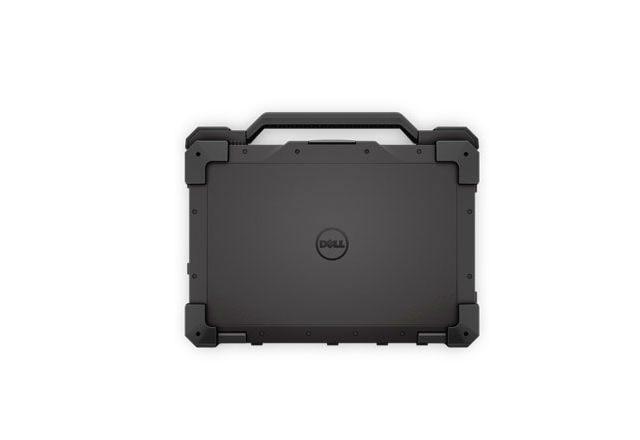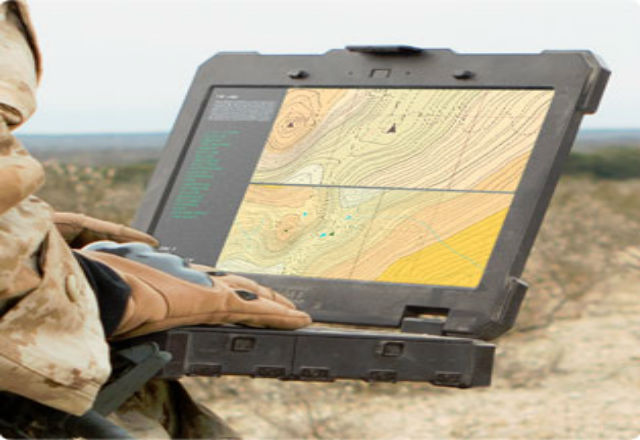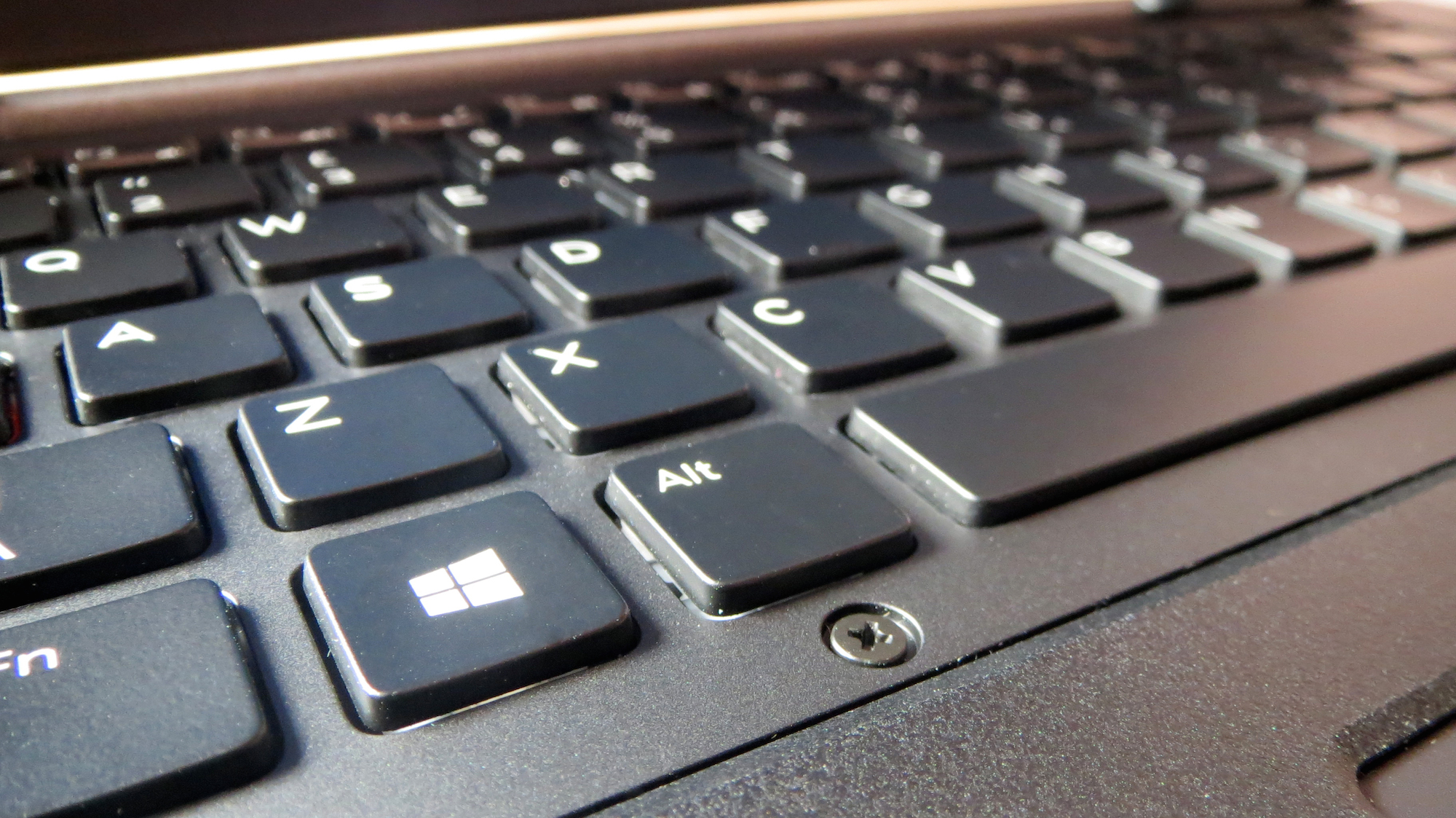Dell Latitude 14 Rugged Extreme review
A £2,500 machine designed to handle the toughest conditions

A rock-solid system crammed with rugged and secure features, this expensive laptop justifies its cost if you need a system that can survive life in the field.
-
+
Incredible build quality; Numerous ruggedised features; Matte, Gorilla Glass screen; Decent mobile power
-
-
Premium price; Thick and heavy; Lack of screen quality; Mediocre battery life

Screen
The Latitude includes a 1,920 x 1,080 resolution screen with a resistive touchscreen so it can be used with gloves or the attached stylus as well as fingers. It's matte, and viewing angles are superb. Made from Gorilla Glass, the display is also as strong as the rest of this system.
This isn't a panel designed for high-end colour work, so it's no surprise quality was mixed. The brightness level of 571cd/m2 is outstanding, and beats most desktop screens as well as virtually every laptop on the market. The Latitude has a solid black level and this combines with the brightness to deliver a stunning 1,730:1 contrast ratio.
That's important for working in the field the panel is bright enough to remain visible beneath scorching sun, and with suitable contrast to make web pages, documents and applications look good no matter the conditions.

Colour accuracy is average but this machine isn't designed for complex graphical work loads.
Ergonomics
The Dell's Scrabble-tile keyboard benefits from the Latitude's solid construction. The keys have a snappy action and they're big enough, but the real boon comes from the rock-solid base. You can get up to speed typing after a few minutes of familiarisation.
The keyboard can drain away water spillages, and it can be backlit with four different colours. The layout is fine but a numberpad is missed and the Return key is narrower than we'd like.

The trackpad is also resistive allowing it to be used with gloves. The buttons are great, with a consistent, responsive motion. The pad itself is usually fine, but we were irritated by occasional delays when registering our touches.
Different specifications
Dell sells two models. The fully-maxed out spec is 2,975 inc VAT and beefs up several components. It's got a Core i7-4650U processor with a mighty Turbo Boost top speed of 3.1GHz, along with an Nvidia's GeForce GT 720M discrete graphics card, albeit a modest, low-end chip.
Elsewhere, the upgraded model has 16GB of RAM and a 512GB SSD and a nine-cell battery that should provide an extra couple of hours of longevity when compared to our sample. The pricier machine has a three-year ProSupport warranty, but the cheaper system has a five-year coverage period.
Dell's spec sheet touts several upgradeable components, but none of these options are made available when configuring the laptop. Instead, there's more versatility in software and accessories.
Multiple flavours of Windows 7 and 8.1 can be chosen, and the Latitude can be augmented with up to five years of accidental damage protection, data protection and hard disk data recovery.
Overall
Dell set out to build the ultimate rugged machine with its latest Latitude, and it's succeeded. It's got every feature we can imagine for staying safe in the field, and its top-notch build quality is matched by good security features.
The screen serves its purpose. The resolution, stunning brightness, matte coating and Gorilla Glass material all ensure it's good to go no matter what the conditions, even if its colour accuracy disappoints.
It's not a workstation, so the processor and graphics are serviceable rather than benchmark-busting, and battery life is middling enough for a few hours rather than a whole day.
This is a niche product and at 2,567, the Latitude is in the same ballpark as workstations. If you need a system that can survive challenging conditions it's definitely worth looking into.
Verdict
A rock-solid system crammed with rugged and secure features, this expensive laptop justifies its cost if you need a system that can survive life in the field.
Display: 14in 1,920 x 1,080 resistive touchscreen
OS: Windows 7 Professional 64-bit
Processor: 1.9GHz Intel Core i5-4300U
Graphics: Intel HD Graphics 4400
Memory: 8GB DDR3
Storage: 256GB SSD
Connectivity: Dual-band 802.11ac Wi-Fi; Bluetooth 4.0; Gigabit Ethernet
Ports: 2 x USB 3, 2 x USB 2, 2 x RS-232 serial, 2 x Ethernet, 1 x headphone, D-SUB, HDMI, SDXC card reader, ExpressCard/54 slot
Other: Stylus; DVD writer; Optional fingerprint scanner; optional GPS; 5yr ProSupport RTB warranty
Dimensions: 356 x 247 x 52mm
Weight: 3.86kg
Get the ITPro daily newsletter
Sign up today and you will receive a free copy of our Future Focus 2025 report - the leading guidance on AI, cybersecurity and other IT challenges as per 700+ senior executives
Mike Jennings has worked as a technology journalist for more than a decade and has been fascinated by computers since childhood, when he spent far too long building terrible websites. He loves desktop PCs, components, laptops and anything to do with the latest hardware.
Mike worked as a staff writer at PC Pro magazine in London for seven years, and during that time wrote for a variety of other tech titles, including Custom PC, Micro Mart and Computer Shopper. Since 2013, he’s been a freelance tech writer, and writes regularly for titles like Wired, TechRadar, Stuff, TechSpot, IT Pro, TrustedReviews and TechAdvisor. He still loves tech and covers everything from the latest business hardware and software to high-end gaming gear, and you’ll find him on plenty of sites writing reviews, features and guides on a vast range of topics.
You can email Mike at mike@mike-jennings.net, or find him on Twitter at @mikejjennings
-
 Cleo attack victim list grows as Hertz confirms customer data stolen – and security experts say it won't be the last
Cleo attack victim list grows as Hertz confirms customer data stolen – and security experts say it won't be the lastNews Hertz has confirmed it suffered a data breach as a result of the Cleo zero-day vulnerability in late 2024, with the car rental giant warning that customer data was stolen.
By Ross Kelly Published
-
 Women show more team spirit when it comes to cybersecurity, yet they're still missing out on opportunities
Women show more team spirit when it comes to cybersecurity, yet they're still missing out on opportunitiesNews While they're more likely to believe that responsibility should be shared, women are less likely to get the necessary training
By Emma Woollacott Published
-
 OpenAI wants developers using its new GPT-4.1 models – but how do they compare to Claude and Gemini on coding tasks?
OpenAI wants developers using its new GPT-4.1 models – but how do they compare to Claude and Gemini on coding tasks?News OpenAI says its GPT-4.1 model family offers sizable improvements for coding, but tests show competitors still outperform it in key areas.
By Ross Kelly Published